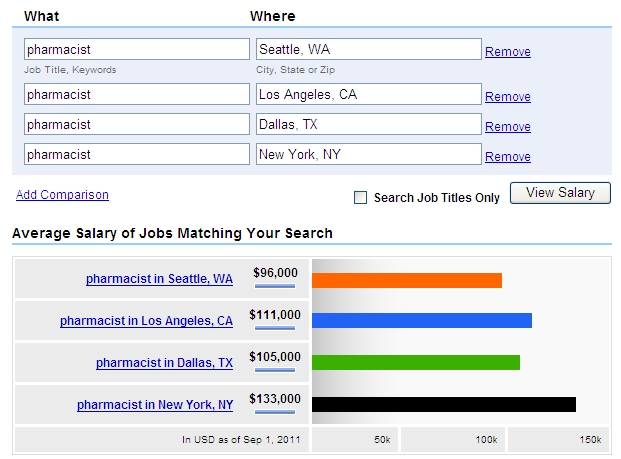Demand for pharmacists remains high and increases annually due to the fact that more and more drugs are being prescribed to Americans. Additionally, Americans spend more on medicine than any other group in the world. As their medications skyrocket in price, citizens continue to hand out the cash for the latest pill that comes their way. What has this meant for pharmacists? Salaries have increased to roughly 50 dollars an hour on average with options to work virtually anywhere as major retail pharmacies like Walgreens expand at a rapid rate. This means as a pharmacist one is able to have a flexible schedule and be selective about the jobs one takes. CareerStaff Rx provides travel, permanent, temporary, and local contract placement services for all employees, showing the range of possibilities open to pharmacists and technicians today. In addition, the pharmacy industry has expanded to include retail, hospital, consulting, long-term care, mail order, corrections, industrial, nuclear, community and home health care settings. Even in the last fifty years, the pharmacy industry has grown to become one of the most equal job markets for men and women. Females made up only 8% of the industry in 1950 and represent a majority today at 55%. With all this evidence, CareerStaff Rx recognizes that the industry is constantly changing, growing and reinventing itself. Here are a few surprising facts you may not know…but should!
- The fact that prescription prices have been increasing is a surprise to no one. However, the rapid rate may be! According to Marcia Angell in her new book, The Truth About Drug Companies, prescription medications are the fastest growing part of health care bills. Americans today have higher increases in drug costs than the costs they are paying to see a doctor and receive professional medical advice! Dr. Angell explains this is because we are being prescribed and taking more drugs than ever before. These are likely to be newer, innovative drugs and thus more expensive in the first place. Additionally, prices are increased routinely throughout the year as well.
- Consumers aren’t the only ones cashing out for their prescriptions, however. Some pharmaceutical companies are spending more on their marketing than their research. In some cases this can mean twice as much money spent on promotional campaigns as research and development of the drugs themselves. The entire industry spent over $33.5 billion on marketing costs in 2004. A study by two York University researchers, “supports the position that the U.S. pharmaceutical industry is marketing-driven and challenges the perception of a research-driven, life-saving, pharmaceutical industry that values the lives of its patients, rather than their spending habits.”
- As an educated pharmacist, you may recognize many of the “new” drugs appearing on the market these days. In reality, most new drugs are not that new at all. A recent study found “that two-thirds of the prescription drugs approved by the Food and Drug Administration between 1989 and 2000 were identical to existing drugs or modified versions of them. Only about one-third of the drugs approved by the FDA during the time period were based on new “molecular entities” that treat diseases in novel ways.” However, these “new” drugs will cost consumers more because the drug companies have to extend their patents and cash out to promote the new product.


